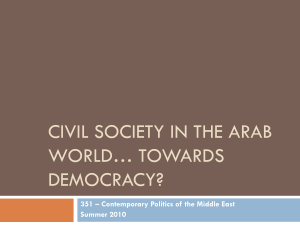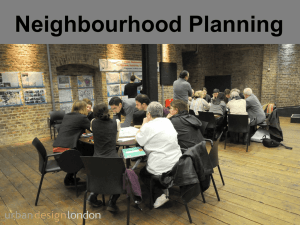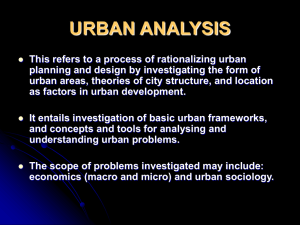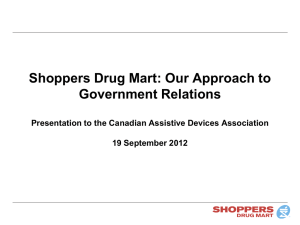THOUGHTS FOR JUNE 12th
advertisement
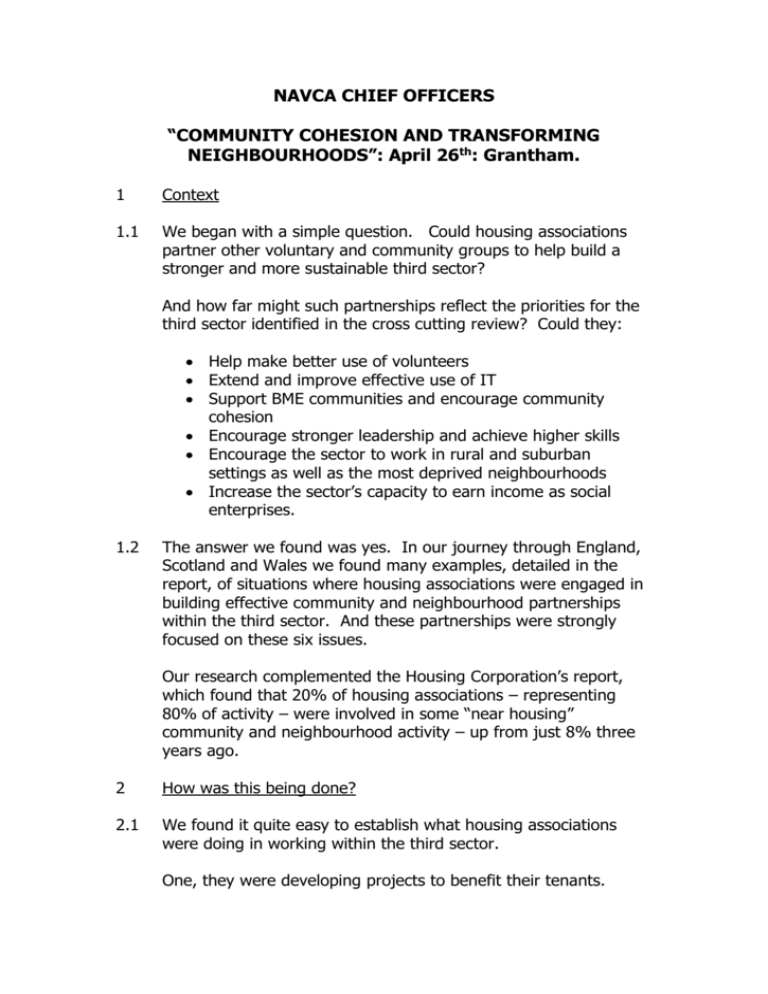
NAVCA CHIEF OFFICERS “COMMUNITY COHESION AND TRANSFORMING NEIGHBOURHOODS”: April 26th: Grantham. 1 Context 1.1 We began with a simple question. Could housing associations partner other voluntary and community groups to help build a stronger and more sustainable third sector? And how far might such partnerships reflect the priorities for the third sector identified in the cross cutting review? Could they: Help make better use of volunteers Extend and improve effective use of IT Support BME communities and encourage community cohesion Encourage stronger leadership and achieve higher skills Encourage the sector to work in rural and suburban settings as well as the most deprived neighbourhoods Increase the sector’s capacity to earn income as social enterprises. 1.2 The answer we found was yes. In our journey through England, Scotland and Wales we found many examples, detailed in the report, of situations where housing associations were engaged in building effective community and neighbourhood partnerships within the third sector. And these partnerships were strongly focused on these six issues. Our research complemented the Housing Corporation’s report, which found that 20% of housing associations – representing 80% of activity – were involved in some “near housing” community and neighbourhood activity – up from just 8% three years ago. 2 How was this being done? 2.1 We found it quite easy to establish what housing associations were doing in working within the third sector. One, they were developing projects to benefit their tenants. HouseMark – “ An Opportunity waiting to happen” Two, they were identifying local needs and setting up independent projects to meet them – “design and deliver” – and employing their own community development staff. Three, they were working systematically with their third sector partners in activities that helped build joint capacity – both in terms of strengthening the sector but also in terms of improving the performance of the housing associations. 2.2 We explored this third group in more detail. We found four types of partnerships, or “hubs”. There were “thematic” hubs – tackling a specific issue. There were “neighbourhood” hubs, connecting housing associations with the neighbourhood management initiatives. There were explicit “capacity” hubs aimed at quality and performance issues. And there were “multiple” hubs where housing associations were working together to build an internal critical mass of activity before engaging with other third sector organisations in a range of activities. 3 Where was this exploration taking us? 3.1 It’s true to say that as our research progressed, we realised how closely our study connected with the current Government priority of engaging with the third sector in both the management and delivery of services. 3.2 A range of Government reports fitted in with our enquiries. For example, Third Sector compacts, Firm Foundations, Why Neighbourhoods Matter, Futurebuilders, ChangeUp and Local Area Agreements all became relevant. Our report summarises these initiatives to help housing associations get up to speed. And in building out from our original feasibility study, we began to assess the implications of the research for current policy issues and neighbourhood debate. 4 Implications for the policy debate 4.1 We began to connect our work with the devolution agenda involving change at national, regional, local and neighbourhood levels. We went in search of “bedrock” – that is an organisational structure within the third sector that would withstand the pressure of this intention to devolve certain responsibilities to a 2 HouseMark – “ An Opportunity waiting to happen” neighbourhood level as part of a process involving central and local government, too. 4.2 We found that housing, with its mature reform programme – dating back to 1974 – its revenue flow and its established dialogue with tenants offered the best opportunity for establishing local initiatives that would enhance such devolution rather than be swamped by it. So we put housing associations under scrutiny – what could they offer? 4.3 We first realised that the great change in our economy from manufacturing to services has implications at the level of our research. Organisation used to be mainly around the workplace – more Trade Union than Women’s Union. But organisation is now more vibrant at home and neighbourhood level and increasingly involves women. So our work indicates the relevance of this housing and neighbourhood focus. 4.4 Next we realised that housing associations have largely travelled through the great political problem that equates “reform” with “privatisation”. This problem still hampers reform in health and education. Our journey has been stormy. Proposals that housing associations be established to take over the management of previously Council owned housing have been portrayed by some as asset strippers and being the private sector in disguise. Some ballots have been lost. But the evidence is becoming persuasive that rather that asset stripping, housing has seen a programme of asset transfer through the change from “one size fits all” Council housing management to the more flexible patterns and third sector partnerships that housing associations can weave. Despite the continuation of poor practice in a few unreformed Local Authority housing departments, housing has seen the greatest revolution in service delivery. Housing associations now manage as many houses in the UK as Councils and tenants are, in broad terms, more satisfied with the service they provide. Arms Length Management Organisations (ALMOs) also manage a significant proportion of housing stock with similar positive outcomes. So the report suggests that the role of “community anchor” sits more comfortably on housing associations and ALMOs than it might on schools and hospitals, though here, too, their journey to independence is beginning. 3 HouseMark – “ An Opportunity waiting to happen” 4.5 Then we began to realise that the bigger housing associations, criticised by some partners as growing apart from the third sector, actually had the capacity for significant input. There was no direct correlation between size and insensitivity. Neighbourhood initiatives were as likely, in fact one could argue, more likely to be pursued by housing associations with the financial security that size bestows. And there was a further reason why both size and sensitivity matters. Neighbourhood regeneration requires organisations that punch their weight – that can go, in the words of one contributor – from “back street to Downing Street”. Housing associations can do this. They can work with national government. Their activities can complement the move towards city regions. They engage with local authorities. They connect self government with local government. And they work at a neighbourhood and community level. 4.6 We recognised that housing associations can be effective partners not just because of altruism, though they see poverty as an affront, but because of solid business sense. Failing neighbourhoods put past housing association investment at risk and make further involvement problematic. So “In Business for Neighbourhoods” isn’t just a slogan or a brand, it’s an understanding that a bad landlord cannot be a good neighbour. It puts pressure to ensure effective performance at the level that matters, in neighbourhood based housing management. 4.7 Lastly, we also recognised the need to refresh community leadership at this “ground up” level. Too often we found energy and enthusiasm thwarted by residents from the old guard. They were comfortable with ward meetings, long agendas, points of order and the bureaucracy of representation. Like the three stages of housing association neighbourhood involvement, first for tenants, then “doing for” and finally “doing with” we found scrutiny councillors who were determined to be the only community leaders rather than work with active citizens and play the important role of neighbourhood enablers. Because of their contact with significant numbers of tenants, housing associations were well placed to encourage the new energies that could be found amongst them and help to find that ideal balance between legitimacy by election and legitimacy by action. A number of housing associations had instituted their own 4 HouseMark – “ An Opportunity waiting to happen” small award schemes or linked with programmes such as Community Champions to bring new ideas to the fore. 5 Roadblocks and opportunities 5.1 One main problem is mutual suspicion. Do housing associations see this broader neighbourhood picture? Can their third sector partners see beyond size and, maybe, to help reform bureaucracy, to seize the opportunities that these housing based partnerships offer? 5.2 How far can “near housing” go? How rigid are the constraints on housing associations to be risk averse and to be housing monocultures? Can the new Communities England and the Department encourage the connection between housing “depth” and neighbourhood “breadth”. 5.3 Can housing associations, through their representative bodies, form effective links with other “umbrella” organisations in the third sector? The report found significant evidence of “parallel lines” in policy, with voluntary and community organisations assuming the housing associations had their own separate lines of communication with local and central government. Both parts of the sector were not often found sitting round the same table. 5.4 Housing associations also need to be faithful partners. Regeneration programmes take time. A commitment to partnership with other third sector organisations is for the long term. Support cannot simply be switched off if other pressures make extra calls on time and resources within the housing association. 5.5 Housing associations also need to recognise the different contributions they might make. In some neighbourhoods they may need to lead regeneration programmes, in others they may be best to support existing initiatives. In some circumstances they may seek to transfer housing to more locally based organisations. 5.6 Our research demonstrates that housing associations can be some of the “community anchors” the Government is looking for. But other forces, pressure to reduce costs and pressure to reduce the development role are at work. Neighbourhood management is re-enforced by the ability to undertake neighbourhood action. Physical improvement and new building needs to be part of the 5 HouseMark – “ An Opportunity waiting to happen” neighbourhood package. “Multiple” housing association hubs at neighbourhood level may be a way of ensuring some development capacity. We need to explore the territory, to see what links can be made with ChangeUp, to connect with Local Area Agreements and the Safer and Stronger Communities Fund, to promote “In Business” still further. We need to recognise that housing associations are, in the words of our report, an “Opportunity waiting to happen”. Chris Wadhams For NAVCA th 26 April 2007 “An opportunity waiting to happen”, funded by the Home Office, was launched by the Housing Associations Charitable Trust (hact), the Housing Corporation and the National Housing Federation on June 12th 2006. Copies of the report and the brief summary are available from hact. hact is now in discussion with the Department for Communities and Local Government to explore the potential of partnerships between associations and other third sector organisations in building capacity and organisational infrastructure within the sector . Chris Wadhams is the Managing Director of Chris Wadhams Associates Ltd. He can be contacted by e-mail on cwadhams@hotmail.com, by telephone on 0121 784 4858 or by post at 131 Newbridge Road, Birmingham B9 5JF. hact-navca-april-26-presentation 6


